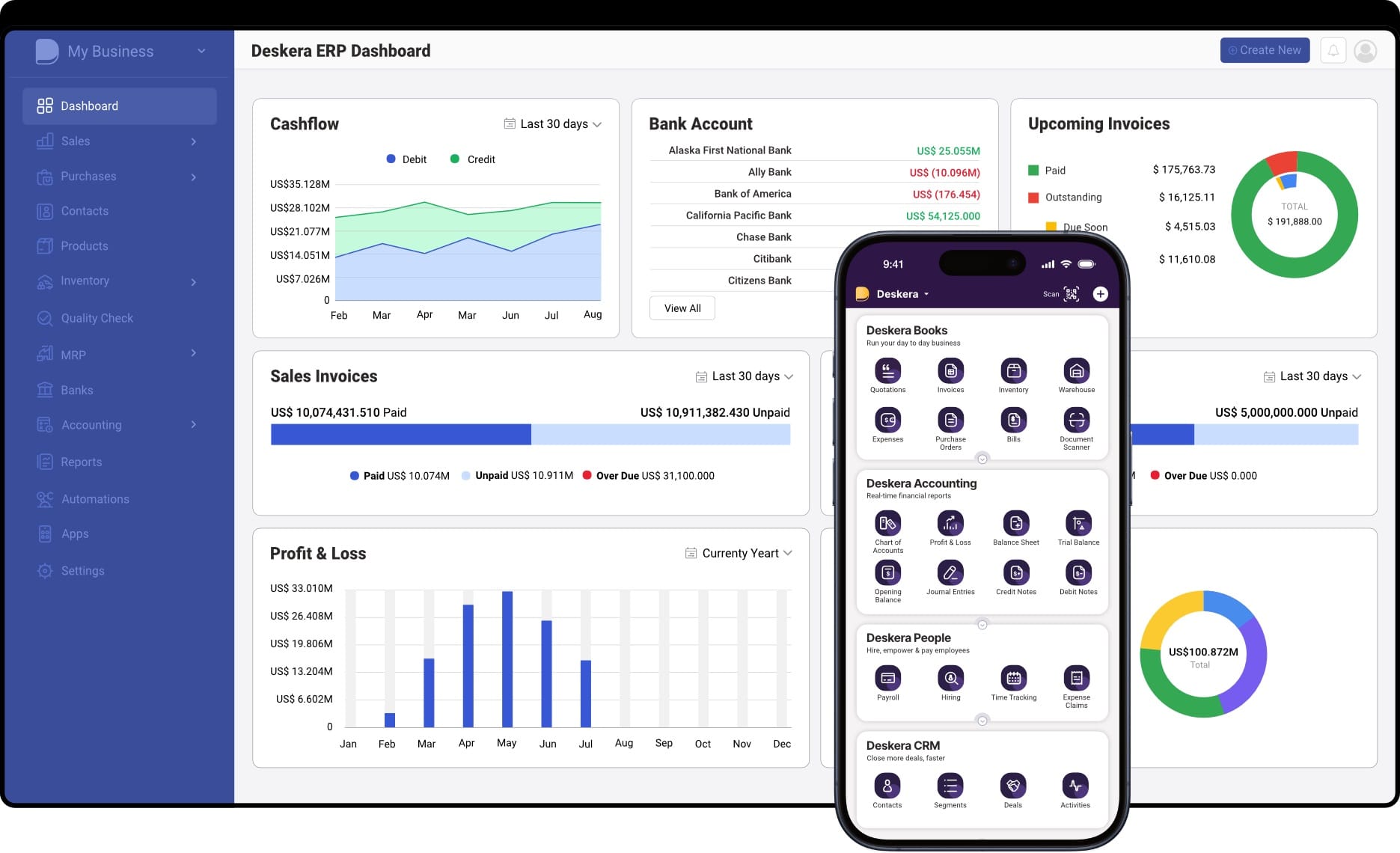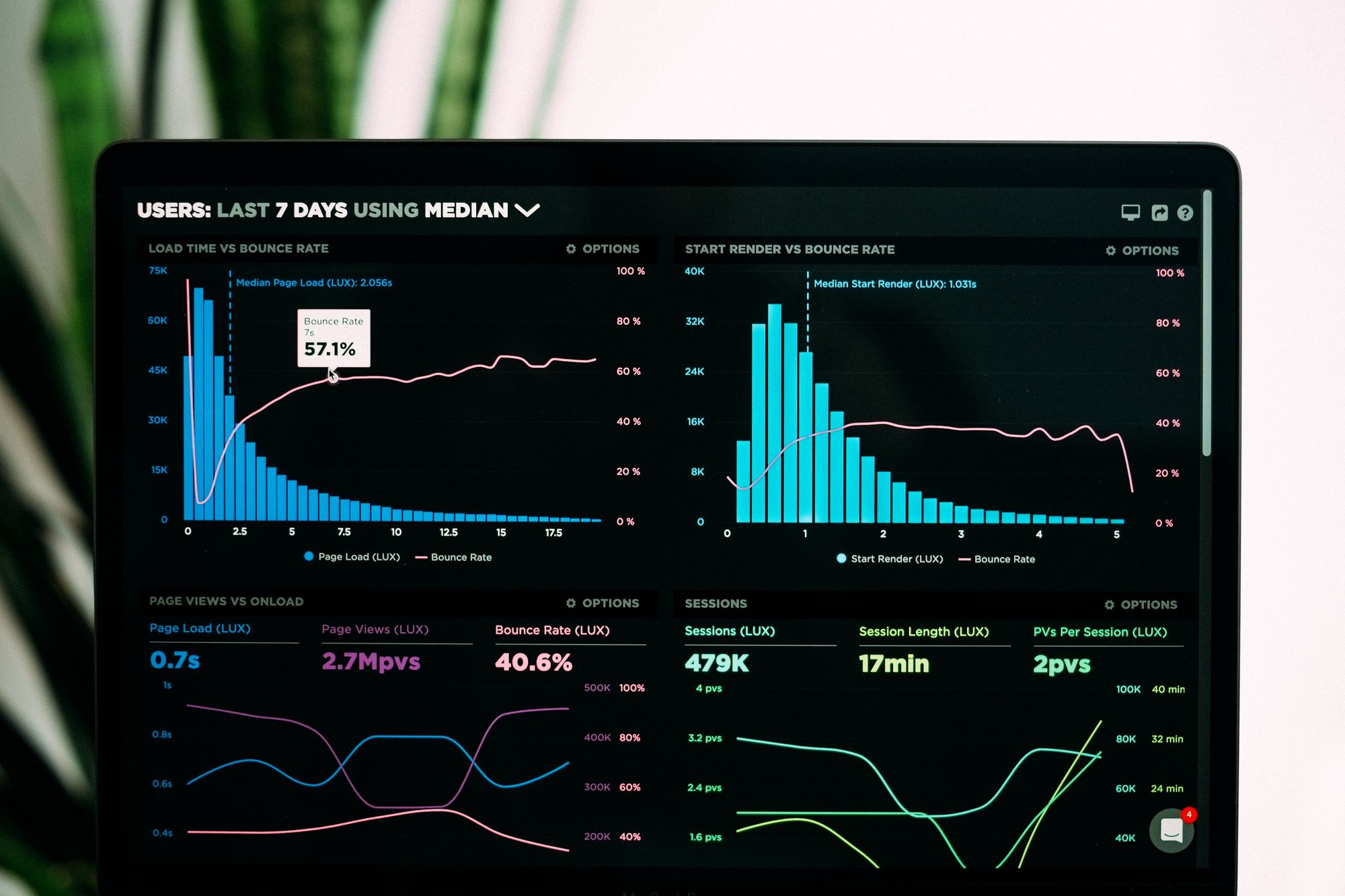In today’s competitive business landscape, maximizing revenue while optimizing resources is crucial for sustainable growth. Revenue management, a strategic approach to pricing, demand forecasting, and inventory control, enables businesses to enhance profitability by making data-driven decisions.
Industries such as hospitality, retail, manufacturing, and SaaS leverage revenue management strategies to balance supply and demand effectively. With advancements in technology and artificial intelligence, revenue management has evolved beyond traditional pricing models, helping companies stay agile in dynamic markets.
The global revenue management market was valued at $19.9 billion in 2022 and is projected to reach $69.2 billion by 2032, growing at a CAGR of 13.6% from 2023 to 2032. This rapid growth is fueled by increasing adoption of AI-driven pricing models, real-time data analytics, and automation tools that streamline revenue optimization.
Businesses are increasingly turning to intelligent revenue management solutions to drive profitability, enhance customer satisfaction, and maintain a competitive edge. The ability to adjust prices dynamically, predict demand accurately, and manage inventory efficiently has become a game-changer in revenue generation strategies.
Technology plays a pivotal role in modern revenue management, enabling businesses to leverage data analytics for better decision-making. AI-powered tools and cloud-based software solutions help organizations forecast demand, optimize pricing, and automate revenue processes.
Companies that integrate revenue management into their operational framework can respond swiftly to market fluctuations, ensuring profitability even during economic uncertainties. As digital transformation accelerates, businesses must adopt advanced revenue management strategies to stay ahead of the curve.
One such comprehensive solution is Deskera ERP, which offers powerful revenue and financial management features tailored for businesses of all sizes. Deskera ERP helps streamline pricing strategies, automate invoicing, and integrate financial reporting with real-time insights.
Its AI-driven capabilities allow businesses to make informed pricing and inventory decisions, enhancing profitability and operational efficiency. By leveraging Deskera ERP, companies can adopt a data-driven approach to revenue management, ensuring long-term growth and sustainability.
What is Revenue Management?
Revenue management is a strategic approach that leverages data analytics to predict demand and optimize pricing, inventory, and sales strategies. It involves selling the right product or service to the right customer at the right price, at the right time, and through the right channel.
Unlike traditional pricing methods that rely on fixed markups, revenue management focuses on market-driven pricing that adapts to customer behavior, industry trends, and competitive dynamics.
At its core, revenue management enables businesses to maximize profitability by aligning pricing strategies with real-time market demand. It is widely used in industries with high fixed costs and perishable inventory, such as hospitality, airlines, event management, and car rentals.
For example, hotels adjust room rates based on occupancy forecasts, while airlines modify ticket prices according to seat availability and booking patterns. By continuously analyzing data, businesses can anticipate fluctuations in demand and make informed pricing decisions.
The effectiveness of revenue management lies in its ability to integrate multiple factors, including demand forecasting, customer segmentation, and competitor analysis. It is not solely about increasing prices but also about optimizing availability and distribution to enhance revenue potential.
Businesses that successfully implement revenue management strategies can improve profitability, increase operational efficiency, and enhance customer satisfaction by offering personalized pricing and targeted promotions.
Modern revenue management relies on advanced technology, including AI-driven analytics and cloud-based ERP systems. Deskera ERP is one such solution that helps businesses automate revenue management processes, streamline pricing strategies, and optimize financial planning.
With built-in AI capabilities, Deskera ERP enables businesses to track market trends, forecast demand, and make data-driven decisions that drive sustainable growth. As businesses navigate an increasingly dynamic market, adopting revenue management tools like Deskera ERP can be a game-changer in achieving long-term success.
Revenue Management vs. Yield Management: Key Differences
Understanding the difference between revenue management and yield management is essential for businesses looking to optimize pricing and maximize profits. While both strategies focus on revenue growth, their approach and application vary significantly.
1. Definition & Scope
- Revenue Management: A broad strategy focused on optimizing pricing, inventory, and customer segmentation to maximize overall revenue. It involves demand forecasting, market trend analysis, and dynamic pricing.
- Yield Management: A subset of revenue management that specifically focuses on maximizing revenue from a fixed, perishable inventory by adjusting prices based on demand.
2. Primary Focus
- Yield Management:
- Maximizes revenue from limited, time-sensitive inventory (e.g., airline seats, hotel rooms).
- Adjusts pricing dynamically to ensure all units are sold at the highest possible price before expiration.
- Revenue Management:
- Goes beyond inventory optimization to include cross-selling, customer lifetime value, and ancillary revenue streams (e.g., hotel services like dining and spa).
- Takes a long-term approach to pricing and revenue generation.
3. Industry Applications
- Yield Management: Hotels, airlines, event venues, car rentals—any business with fixed, depletable inventory that expires.
- Revenue Management: Used in retail, SaaS, and hospitality, considering multiple revenue sources beyond just inventory sales.
4. Key Differences
5. The Role of Technology
Businesses that combine both yield and revenue management gain a competitive edge. Deskera ERP provides AI-driven insights for dynamic pricing, demand forecasting, and financial analytics, helping companies optimize both inventory sales and long-term revenue growth. By leveraging advanced revenue management solutions, businesses can maximize profitability and sustain market success.
Importance of Revenue Management
Revenue management is a critical business strategy that helps companies optimize pricing, manage demand, and maximize revenue. By leveraging data-driven insights, businesses can improve profitability, enhance customer satisfaction, and stay competitive in dynamic markets.
Here are the key reasons why revenue management is essential:
1. Maximizing Revenue & Profitability
- Ensures businesses sell the right product, to the right customer, at the right price, at the right time.
- Helps set optimal pricing strategies that boost revenue without alienating customers.
- Increases profit margins by adjusting prices based on market demand, seasonal trends, and competitor pricing.
2. Optimizing Inventory Utilization
- Prevents revenue loss from unsold or expired inventory by using strategic pricing.
- Balances supply and demand to reduce stockouts, overstocking, and waste.
- Essential for industries with perishable inventory (hotels, airlines, event tickets, etc.).
3. Enhancing Customer Experience & Satisfaction
- Personalizes pricing and offers based on customer preferences, behaviors, and purchasing history.
- Encourages loyalty and repeat business by delivering competitive value and tailored promotions.
- Ensures customers receive the best value for money, increasing brand trust and retention.
4. Gaining a Competitive Advantage
- Helps businesses adapt quickly to market changes, seasonal trends, and demand fluctuations.
- Allows companies to identify high-demand periods and adjust pricing accordingly.
- Enables businesses to outperform competitors through dynamic pricing and strategic promotions.
5. Improving Forecasting & Planning
- Uses data analytics, AI, and machine learning to predict demand and adjust strategies proactively.
- Helps businesses anticipate market trends and make informed decisions for long-term growth.
- Reduces uncertainty by providing data-driven insights into pricing and sales strategies.
6. Better Resource Allocation
- Ensures efficient staffing, production, and inventory management based on revenue forecasts.
- Helps businesses allocate marketing budgets effectively by identifying high-revenue opportunities.
- Prevents unnecessary expenses by aligning resources with demand patterns.
7. Enhancing Business Sustainability & Growth
- Encourages long-term revenue stability by continuously optimizing pricing and sales strategies.
- Helps businesses scale efficiently by identifying the most profitable revenue streams.
- Supports expansion into new markets and customer segments through targeted pricing models.
The Key Stages of Revenue Management
Effective revenue management involves a structured process that helps businesses optimize pricing, forecasting, and overall revenue strategies. Below are the six essential stages of revenue management:
1. Data Collection and Market Analysis
To make informed decisions, businesses must gather comprehensive data from various sources, including:
- Product and service offerings: Understanding what is being sold and how it is positioned in the market.
- Customer insights: Analyzing purchasing behaviors, demographics, and demand trends.
- Market dynamics: Monitoring competitors, seasonality, and economic conditions.
- Historical performance: Examining past sales trends to predict future demand.
2. Customer Segmentation
Once data is collected, segmenting customers based on specific attributes helps refine pricing and marketing strategies. Common segmentation criteria include:
- Demographics: Age, location, and income levels.
- Behavioral patterns: Purchase frequency, preferred price points, and buying motivations.
- Time-based segmentation: Differentiating weekday and weekend consumers or early vs. last-minute buyers.
3. Forecasting Demand
Accurate demand forecasting allows businesses to anticipate future sales and adjust their pricing accordingly. This stage involves:
- Historical data analysis: Identifying patterns and trends from past performance.
- Market condition assessments: Considering external factors such as economic shifts, weather patterns, and competitor activities.
- Predictive modeling: Using statistical methods and AI-driven algorithms to refine accuracy.
4. Strategic Pricing and Revenue Optimization
With a clear demand forecast, businesses can set optimized pricing strategies, including:
- Dynamic pricing: Adjusting prices in real-time based on demand fluctuations.
- Competitive pricing: Aligning or differentiating prices based on market competition.
- Bundling strategies: Offering combined products/services to enhance value perception.
- Value-based pricing: Setting prices according to customer willingness to pay and perceived benefits.
5. Implementation and Execution
Once pricing strategies are defined, businesses need to ensure their successful execution by:
- Leveraging technology: Using revenue management software for automation and real-time adjustments.
- Monitoring market response: Tracking sales performance and customer feedback.
- Adjusting strategies dynamically: Making real-time modifications based on ongoing market changes.
6. Continuous Evaluation and Refinement
Revenue management is an ongoing process that requires continuous monitoring and adjustment. Businesses should:
- Analyze performance data: Compare actual revenue against forecasts to identify gaps.
- Refine strategies: Adjust pricing, segmentation, and forecasting techniques based on performance insights.
- Adapt to market shifts: Stay agile in response to competitor actions, economic changes, and evolving customer preferences.
By following these key stages, businesses can enhance their revenue potential, improve profitability, and maintain a competitive edge in their respective industries.
Revenue Management Challenges and Solutions
Revenue management is a complex process that requires balancing pricing, demand forecasting, and distribution strategies.
Businesses must navigate ever-changing market conditions, unpredictable consumer behavior, and technological challenges to optimize their revenue potential.
Below are some of the most common revenue management challenges and strategies to address them.
Challenge 1: Balancing High Revenue with Customer Demand
Pricing products or services too high can lead to lower sales and customer dissatisfaction, while pricing them too low may reduce profitability, devalue the brand, or create excessive demand that cannot be met efficiently.
Key Issues:
- Striking the right balance between revenue maximization and customer willingness to pay.
- Handling competition-driven pricing changes and discounting tactics.
- Managing perishable inventory like hotel rooms, airline seats, or event tickets.
Solutions:
- Implement dynamic pricing tools that monitor real-time market conditions and adjust prices accordingly.
- Use customer segmentation to apply targeted pricing strategies, such as loyalty-based discounts or personalized offers.
- Experiment with A/B testing on different price points to analyze customer responses and optimize pricing decisions.
Challenge 2: Market Volatility and Uncertain Demand
External factors such as economic downturns, seasonal fluctuations, and global events (e.g., pandemics, natural disasters, geopolitical tensions) can disrupt demand patterns and make revenue forecasting difficult.
Key Issues:
- Unpredictable demand fluctuations impacting pricing and inventory management.
- Need for rapid pricing adjustments in response to sudden market changes.
- Over-reliance on outdated demand forecasting models.
Solutions:
- Develop a flexible pricing structure that allows real-time adjustments based on demand shifts.
- Implement scenario-based forecasting models to prepare for different market conditions and potential revenue risks.
- Maintain strategic partnerships with key distribution channels to quickly roll out promotional campaigns or price changes.
Challenge 3: Data Integration and Management Issues
Effective revenue management depends on integrating data from multiple sources, including CRM, ERP, point-of-sale (POS) systems, and third-party booking platforms. Without seamless integration, data silos form, leading to poor decision-making.
Key Issues:
- Disjointed data systems causing inaccurate revenue forecasting.
- Limited visibility into key revenue metrics and inventory levels.
- Inconsistent data management leading to errors in pricing and demand analysis.
Solutions:
- Invest in cloud-based revenue management systems (RMS) that consolidate data sources and offer real-time analytics.
- Conduct regular data audits and establish clear data governance policies to ensure accuracy and consistency.
- Use APIs or integration platforms to enhance communication between revenue management tools and other business systems.
Challenge 4: Unpredictable Customer Behavior
Even with advanced analytics, customer behavior can be unpredictable. Preferences, price sensitivity, and booking habits can change unexpectedly, leading to revenue losses through cancellations, no-shows, or last-minute bookings.
Key Issues:
- Difficulty predicting customer preferences and purchase timing.
- High cancellation rates affecting revenue forecasts.
- Varying levels of price sensitivity among different customer groups.
Solutions:
- Utilize predictive analytics and machine learning to analyze historical data and identify behavioral patterns.
- Introduce strategic policies such as incentives for non-refundable bookings or loyalty-based discounts to reduce last-minute cancellations.
- Implement customer segmentation strategies to offer targeted promotions based on past behavior.
Revenue management success depends on businesses' ability to adapt to market shifts, leverage technology for better data integration, and develop pricing strategies that align with customer demand.
By proactively addressing these challenges, companies can optimize profitability, enhance operational efficiency, and maintain a competitive edge in their industry.
Mastering Revenue Management: Strategies, Best Practices, and Essential Tips
Effective revenue management is about more than just pricing—it’s a strategic approach that balances demand, inventory, distribution, and customer experience to maximize profitability. While adjusting prices is a key component, businesses often overlook other powerful revenue optimization techniques.
1. Optimize Inventory Controls
Managing inventory strategically ensures that products, services, or rental units are available at the right time to maximize revenue. Instead of making all available units (hotel rooms, airline seats, tee times, etc.) accessible immediately, businesses should:
- Hold back inventory: Keeping some stock reserved allows businesses to adjust availability and pricing based on demand fluctuations. For example, a hotel may initially release only a portion of its rooms for a busy holiday weekend, increasing prices as demand rises.
- Coordinate with sales teams: Large group bookings, such as corporate events or weddings, require reserved inventory. Continuously aligning with sales teams helps prevent overbooking or last-minute shortages.
2. Leverage Distribution Channels Effectively
Selling through multiple channels—direct sales, third-party marketplaces, and aggregators—requires careful planning. Each channel has different costs, commissions, and customer behaviors. To optimize revenue:
- Prioritize direct bookings: Encourage customers to book directly through your website or platform by offering incentives like loyalty points, discounts, or exclusive perks.
- Strategically use third-party platforms: While marketplaces like Expedia or Booking.com offer visibility, they also take a percentage of your revenue. Avoid over-relying on them by keeping a balanced inventory split between direct and indirect channels.
- Limit deep discounts: Ensure promotional discounts on third-party platforms do not cannibalize direct bookings.
3. Implement Duration Controls to Maximize Occupancy
Setting minimum or maximum stay requirements can significantly impact revenue, particularly in industries with fluctuating demand. For example:
- Minimum stay policies: A resort during a holiday weekend might require guests to book at least three nights to optimize occupancy and avoid gaps between bookings.
- Smart overbooking tactics: In industries like airlines and hotels, minor overbooking is a common strategy to compensate for expected cancellations and no-shows. However, businesses must balance this carefully to avoid excess compensation costs.
4. Use Married Segments in Transportation and Hospitality
In the airline and transportation industries, linking multiple travel segments together (married segments) helps maximize revenue and efficiency. This approach prevents high-demand short trips from displacing more lucrative long-haul bookings.
- Example: An airline might restrict a popular flight from New York to Chicago to customers who are traveling onward to Los Angeles, rather than allowing travelers to book only the short-haul route at a lower fare.
- Application beyond airlines: Similar principles apply to any industry where bundling services increases profitability, such as cruise lines, train services, and bus networks.
5. Maintain High-Quality Data for Accurate Decision-Making
Revenue management relies on accurate, real-time data to make informed pricing and inventory decisions. Businesses should:
- Utilize revenue management software: Platforms like yield management systems track key performance indicators (KPIs), demand fluctuations, and market trends to help optimize pricing and sales strategies.
- Monitor customer behavior: Analyzing booking trends, seasonal demand, and competitor pricing ensures you stay competitive while maximizing profit.
- Regularly update forecasts: Demand forecasting should be a continuous process, incorporating real-time market conditions rather than relying solely on historical data.
6. Optimize Workforce Planning for Revenue Growth
Effective headcount management ensures that the right team members are in place to support revenue-generating activities. To achieve this:
- Match staffing to demand: Retail stores, hotels, and service providers should adjust staffing levels based on seasonal or event-driven demand to avoid excess labor costs while maintaining service quality.
- Invest in critical roles: Hiring specialists like revenue analysts, pricing strategists, or software developers can drive revenue growth by improving product offerings and operational efficiency.
7. Stay Ahead with Industry Insights and Market Trends
Revenue management strategies vary across industries, making it essential to:
- Monitor industry-specific trends: For example, ski resorts experience peak demand in winter, while beach resorts thrive in summer. Understanding these patterns allows businesses to plan inventory, pricing, and staffing effectively.
- Engage with industry networks: Attending trade conferences, joining professional associations, and leveraging competitive intelligence can provide valuable insights into emerging revenue management strategies.
8. Practice Transparent and Ethical Pricing
Building customer trust and loyalty is critical for long-term revenue success. Avoid tactics that might drive short-term gains but harm your brand reputation, such as:
- Hidden fees and misleading pricing: Customers expect clear pricing, and unexpected charges can lead to dissatisfaction, negative reviews, and lost business.
- Unethical surge pricing: While dynamic pricing is common in industries like ride-sharing and hotels, excessive price hikes during emergencies or high-demand situations can backfire, leading to public backlash.
Revenue management is a dynamic and data-driven discipline that extends far beyond pricing.
By implementing inventory controls, optimizing distribution channels, leveraging customer insights, and maintaining ethical practices, businesses can maximize profitability while building strong customer relationships.
Whether you’re in hospitality, retail, or transportation, these strategies will help you stay competitive and drive long-term revenue growth.
Revenue Management Pricing Strategies
Pricing is a cornerstone of revenue management, directly influencing demand, occupancy, and overall profitability. Businesses across industries—from hospitality to retail and transportation—use various pricing strategies to optimize revenue while staying competitive.
Here are five key pricing strategies that drive revenue management success:
1. Open Pricing: Dynamic and Flexible Adjustments
Open pricing allows businesses to set prices dynamically in real time without rigid synchronization across room types, booking dates, distribution channels, or stay durations. This approach enables:
- Maximum flexibility: Prices can be adjusted based on demand, competitor pricing, and market conditions.
- Channel-specific pricing: Different platforms can have different rates to maximize revenue.
- Real-time optimization: Businesses can respond instantly to demand changes without being locked into fixed seasonal rates.
Key Consideration: Some third-party distribution platforms impose contractual restrictions on pricing flexibility, so businesses must ensure compliance while implementing open pricing strategies.
2. Forecast Pricing: Long-Term Demand Prediction
Forecast pricing involves setting prices far in advance based on projected demand, competitor trends, and market conditions. This approach is particularly useful for industries with seasonal demand fluctuations.
- Predictive analysis: Uses historical data and market trends to estimate demand and set early-bird or premium pricing.
- Targeted customer segmentation: Appeals to customers who book well in advance, such as corporate clients, early planners, and event attendees.
- Maximized revenue potential: Helps businesses capture high-value bookings before competitors adjust their pricing.
Key Consideration: Forecast pricing requires robust demand forecasting models that account for external factors like economic shifts, competitor strategies, and major events.
3. Guest-Segment Pricing: Targeting Specific Customer Groups
Segment-based pricing involves offering different price points to different customer groups for the same product or service. Examples include:
- Senior discounts and early-bird promotions for older travelers or planners.
- Family package deals that make premium options more accessible to leisure travelers.
- Corporate rates for business travelers who prioritize convenience over cost.
Key Consideration: Businesses must ensure that segment pricing complies with anti-discrimination laws and ethical business practices while effectively targeting the right customer groups.
4. Length-of-Stay Pricing: Encouraging Extended Bookings
Length-of-stay pricing incentivizes customers to extend their bookings by offering discounts for longer stays. This strategy is commonly used in:
- Hotels and resorts: A lower nightly rate for a 3-night stay compared to a 1-night stay.
- Car rentals: Discounts for weekly rentals versus daily rentals.
- Vacation homes: Special rates for extended stays to boost occupancy during off-peak seasons.
Key Consideration: Businesses must strike a balance between maximizing revenue per night and ensuring optimal occupancy levels across different periods.
5. Competition-Driven Pricing: Market-Based Adjustments
This strategy involves setting prices based on competitor pricing trends to maintain a competitive edge. Tactics include:
- Price matching: Ensuring pricing remains in line with or below competitors to attract price-sensitive customers.
- Strategic undercutting: Offering slightly lower rates to capture market share.
- Premium positioning: Charging more than competitors when providing superior convenience, service, or location benefits.
Key Consideration: While competitor pricing data is valuable, businesses should also focus on their unique value proposition rather than engaging in a constant price war.
Choosing the right revenue management pricing strategy depends on a company’s goals, industry, and customer base. Whether leveraging open pricing for real-time flexibility, forecast pricing for long-term demand planning, or competition-driven pricing to maintain market relevance, businesses must continuously analyze market trends and adjust their approach to maximize profitability.
Key Performance Indicators (KPIs) and Metrics for Effective Revenue Management
Revenue management relies on critical financial and operational KPIs to assess business performance, optimize pricing strategies, and drive profitability.
While standard metrics exist across industries, businesses must identify the most relevant ones based on their specific operational model.
Below are some essential revenue management KPIs categorized by industry focus and financial impact.
Financial and Operational Revenue KPIs
- Average Daily Rate (ADR) – Common in the hotel and rental industries, ADR measures the average revenue per unit per day, excluding other revenue sources and unrented periods. It is a key indicator of pricing power.
Formula: Total Room Revenue / Number of Rooms Sold
- Occupancy Rate – The percentage of rented units at any given time, often used in hospitality and real estate to assess demand.
Formula: (Occupied Rooms / Available Rooms) × 100
- Revenue Per Available Room (RevPAR) – A fundamental metric in hospitality, RevPAR evaluates revenue generation per available unit, incorporating both pricing strategy and occupancy levels.
Formula: ADR × Occupancy Rate
- Average Revenue Per Account (ARPA) – Focuses on revenue generated per customer account, frequently used in subscription-based businesses.
Formula: Monthly Recurring Revenue / Number of Accounts
- Profit Per Unit (GOPPAR - Gross Operating Profit Per Available Room) – Examines profitability rather than just revenue, ensuring financial sustainability.
Formula: Gross Operating Profit / Available Rooms
- Passenger Revenue Per Available Seat Mile (PRASM) – Critical for airlines, PRASM measures passenger-generated revenue per seat-mile, accounting for capacity utilization.
Formula: Passenger Revenue / Available Seat Miles
- EBITDA (Earnings Before Interest, Taxes, Depreciation, and Amortization) – A standard financial metric indicating overall profitability and operational efficiency.
Sales Performance and Customer-Centric KPIs
- Forecast vs. Actual Sales – Measures the accuracy of sales predictions to refine revenue forecasting.
Formula: (Actual Sales / Forecasted Sales) × 100
- Annual Contract Value (ACV) – Represents the average revenue per contract over a year, aiding in upselling strategies.
Formula: Total Sales Value of Contracts in a Year / Number of Contracts
- Average Sales Cycle Length – Helps identify sales process inefficiencies by measuring the time taken to convert prospects into customers.
Formula: Total Number of Days to Close a Sale / Total Number of Deals
- Customer Retention & Churn Rate – Retention rate assesses customer loyalty, while churn rate evaluates customer attrition, both crucial for revenue stability.
Retention Rate Formula: ((Total Customers at End of Year – New Customers Acquired) / Customers at Start of Year) × 100
Churn Rate Formula: ((Customers at Start of Year – Customers at End of Year) / Customers at Start of Year) × 100
- Customer Acquisition Cost (CAC) – Determines the cost-effectiveness of marketing and sales efforts in acquiring new customers.
Formula: Total Sales & Marketing Expenses / Number of New Customers Acquired
Tracking these KPIs allows businesses to refine their revenue management strategies, enhance profitability, and maintain a competitive edge in their industry.
How Deskera ERP Helps with Revenue Management
Effective revenue management requires businesses to optimize pricing, demand forecasting, and inventory control while ensuring seamless financial operations.
Deskera ERP provides an integrated solution that enables businesses to maximize revenue, reduce operational inefficiencies, and improve decision-making through automation and real-time insights.

1. Dynamic Pricing and Demand Forecasting
Challenge: Businesses struggle to set optimal prices due to fluctuating demand, competition, and external factors like seasonality or economic changes.
How Deskera ERP Helps:
- Real-time data analytics: Monitors market trends, customer behavior, and demand fluctuations to optimize pricing strategies.
- Automated pricing adjustments: Dynamically updates prices based on predefined rules, competitor pricing, and historical sales data.
- Scenario-based forecasting: Predicts future revenue based on different pricing models, ensuring better financial planning.
2. Centralized Financial Management for Revenue Optimization
Challenge: Revenue managers need accurate financial data, including invoicing, accounts receivable, and expense tracking, to optimize profitability.
How Deskera ERP Helps:
- Automated invoicing and payments: Ensures timely billing and reduces revenue leakage.
- Comprehensive financial reports: Provides insights into revenue trends, profit margins, and cash flow.
- Multi-currency support: Helps businesses manage global transactions without manual calculations.
3. Data-Driven Decision Making with Real-Time Analytics
Challenge: Businesses often rely on fragmented data from multiple sources, leading to delays in decision-making and inaccurate revenue forecasts.
How Deskera ERP Helps:
- Integrated dashboards: Consolidates revenue, sales, and financial data for real-time monitoring.
- AI-powered insights: Identifies revenue trends and suggests actionable strategies to improve profitability.
- Customizable reporting tools: Allows businesses to create detailed reports on revenue performance and key financial metrics.
4. Inventory and Order Management for Revenue Efficiency
Challenge: Poor inventory control leads to overstocking, stockouts, or lost sales, impacting revenue generation.
How Deskera ERP Helps:
- Automated inventory tracking: Ensures optimal stock levels to prevent revenue loss due to inventory mismanagement.
- Order fulfillment automation: Streamlines order processing to improve customer satisfaction and retention.
- Demand forecasting tools: Predicts inventory needs based on sales trends, reducing excess stock and improving cash flow.
5. Compliance and Risk Management
Challenge: Businesses must adhere to financial regulations, taxation policies, and revenue reporting standards to avoid penalties and operational risks.
How Deskera ERP Helps:
- Tax compliance automation: Ensures accurate tax calculations and filings across different jurisdictions.
- Audit-ready financial records: Maintains a digital trail of transactions to simplify compliance audits.
- Risk assessment tools: Identifies potential financial risks and suggests mitigation strategies.
Key Takeaways
- Revenue management is a strategic approach that helps businesses maximize revenue by optimizing pricing, inventory, and demand forecasting.
- Successful revenue management relies on data-driven decision-making, demand forecasting, segmentation, and price optimization to ensure profitability.
- Businesses use strategies like dynamic pricing, forecast pricing, guest-segment pricing, length-of-stay pricing, and competition-driven pricing to maximize revenue.
- Common challenges include pricing optimization, market volatility, data integration issues, and unpredictable customer behavior, all of which require robust solutions.
- Advanced analytics, AI-driven forecasting, integrated data management systems, and flexible pricing models help businesses overcome revenue management challenges.
- Modern revenue management relies on ERP and AI-powered tools to automate pricing, monitor demand in real time, and optimize financial performance.
- Deskera ERP is an all-in-one revenue management solution that empowers businesses with automated pricing, financial management, demand forecasting, and real-time analytics. By streamlining operations and improving data-driven decision-making, businesses can maximize revenue potential and maintain a competitive edge.
Related Articles












